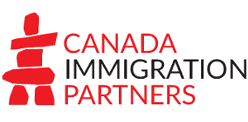All of the travel experiences I had in my childhood and youth have shaped my thoughts on immigration and what it means to join Canada in its security, prosperity and diversity. If you haven’t already, you can read about this in the article Spinning the globe: Landing on Canada – A Guide to How We Became Vancouver Immigration Consultants
The Great Outdoors Was Calling
I was drawn to immigrate to Canada for its wealth of outdoor sports and activities that provide year-round enjoyment: mountain biking, camping, snowboarding, skiing, swimming in lakes, ice skating or ice fishing on a frozen lake are some examples of the allure of Canada to me.
I first came to Canada in 2003 on the International Experience Class (IEC) visa. I met my now-wife and business partner, Miho, at that time while she was working as the regional manager for SWAP, the Student Work Abroad Programme, through which my visa and travel had been arranged. In time we fell in love and decided to build a life together and start a family. Canada offered us the opportunity to do that. This is the beginning of our journey to becoming Vancouver immigration consultants. It is a journey built on love, of people and a country.
Vancouver and the Sunshine Coast: Two Great Places to Live
Settling in Vancouver was the best move we made. Living in Coal Harbour (map link), we had the ocean, Stanley Park, restaurants and all the downtown has to offer.
Later, as we decided to start and raise a family, we moved to the Sunshine Coast, which is a great place for children to grow up, as it’s a collection of small and very safe communities nestled in among the great outdoors I so dearly love.
In addition to outdoor lifestyle, there are other socio-economic factors that attracted both Miho and myself to Canada. This part of the story is very similar to migration factors I noted in this article: Spinning the globe: Landing on Canada – A Guide to How We Became Vancouver Immigration Consultants [LINK]
A Diverse Economy Rich in Commodities
Canada is rich in natural resources, from rare metals to timber, hydrogen production and more. The country was built on a frontier spirit, but now it needs foreign workers with the skills needed to transition to a carbon-neutral economy. As immigration consultants in Vancouver (and the Sunshine Coast) we are perfectly placed to help you move to British Columbia or Alberta, the two western-most Provinces that are so resource rich.
Tolerance and the rule of law
Canada’s immigrants help to shape a country where tolerance and the rule of law are valued. Corruption is rare, and institutions like banks are regulated and stable. Liberal democratic values in the government are designed to (hopefully) benefit every Canadian, however recently they’ve become a resident.
Opportunity knocks
Canada gives immigrants the ability to seek a better life, whether that be pursuing new opportunities, building a business, owning a home or starting a family. Networks of global migrants cultivate new connections and innovation thrives. Fresh air, clean water and strong environmental protection means that Canada’s beauty is accessible to all.
Canada is by no means perfect, but it is a place where new immigrants can contribute to a stronger, more inclusive country by rubbing shoulders with other Canadians, bringing economic benefits through experience and knowledge, contributing to the tax base and receiving world class education and health care.







